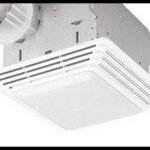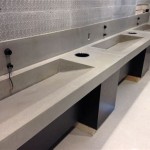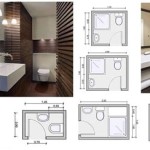How To Remove a Bathroom Drain From a Sink
Removing a bathroom drain from a sink, while seemingly daunting, is a task achievable by most homeowners with a modicum of plumbing knowledge and the proper tools. This process is often necessary when replacing a sink, repairing a leaky drain, or simply upgrading the drain assembly. This article provides a comprehensive guide to safely and effectively removing a bathroom drain.
Prior to commencing the removal procedure, the preparation stage is paramount. This involves gathering necessary tools and materials, ensuring a safe working environment, and understanding the drain assembly in question. Rushing into the process without adequate preparation can lead to complications and potential damage to the sink or plumbing.
The specific steps involved in removing a bathroom drain can vary slightly depending on the type of drain assembly installed. Common types include pop-up drains, lift-rod drains, and grid drains. Although the underlying principle of disassembly remains similar across these variations, understanding the specifics of the installed drain will streamline the process.
Key Point 1: Preparation and Safety Measures
The initial step in any plumbing project should always be ensuring personal safety. This involves turning off the water supply to the sink. Typically, shut-off valves are located directly beneath the sink, on the hot and cold water supply lines. Rotate these valves clockwise until fully closed. If the valves are old or corroded, they may not fully shut off the water. In such cases, the main water supply to the house must be shut off. This is usually located in the basement, garage, or near the water meter.
Once the water supply is shut off, test the faucets to ensure that the water flow has stopped completely. This will prevent accidental flooding during the drain removal process.
Next, gather the necessary tools and materials. A basin wrench is essential for loosening the large nuts that connect the drain assembly to the sink and the drain pipe. This specialized wrench is designed to work in tight spaces and can grip the nut effectively. Other useful tools include a pipe wrench, adjustable pliers, a screwdriver (both flathead and Phillips head), a putty knife, and a bucket.
The bucket is used to catch any remaining water in the drainpipe. Place the bucket directly beneath the drainpipe before disconnecting any connections. Additionally, have some old towels or rags readily available to wipe up any spills.
A pair of safety glasses is crucial for protecting the eyes from debris or splashing water. Gloves are also recommended to provide a better grip and protect the hands from dirt and potential contaminants.
Before physically interacting with any plumbing components, it's beneficial to visually inspect the drain assembly. This involves identifying the different parts, such as the tailpiece, the P-trap, the drain flange, and any connecting nuts or washers. Understanding how these components are connected will facilitate the removal process. Note any signs of corrosion or damage that may require extra caution during disassembly. A digital camera can be useful to document the current configuration before disassembly, which can aid in reassembly later.
Key Point 2: Drain Disassembly
The disassembly process typically begins with disconnecting the P-trap from the drain tailpiece. The P-trap is the curved section of pipe located beneath the sink that traps debris and prevents sewer gases from entering the home. Loosen the slip nuts that connect the P-trap to the tailpiece and the drainpipe. Use the basin wrench or adjustable pliers for this task. Once the nuts are loosened, carefully slide the P-trap down and away from the tailpiece. Be prepared for some water to spill out, so position the bucket accordingly.
Next, the focus shifts to disconnecting the drain tailpiece from the drain flange. The drain flange is the part of the drain assembly that sits inside the sink basin. Typically, a large nut located beneath the sink secures the tailpiece to the drain flange. This nut can be made of metal or plastic. Use the basin wrench to carefully loosen this nut. It may be tight, especially if it has been in place for a long time. Apply steady pressure and avoid stripping the nut.
As the nut is loosened, support the drain flange from above to prevent it from falling into the sink basin. Once the nut is completely removed, carefully detach the tailpiece from the drain flange. Inspect the tailpiece for any damage or corrosion. If the tailpiece is corroded or damaged, it may need to be replaced along with the drain assembly.
With the tailpiece removed, the drain flange is now free within the sink basin. Depending on the type of drain, there may be additional components that need to be detached. For example, pop-up drains typically have a lift rod and a pivot rod that need to be disconnected. These rods are usually held in place by small screws or clips. Carefully remove these screws or clips and detach the rods from the drain assembly.
Once all connecting components are removed, the drain flange can be lifted out of the sink basin. It may be necessary to gently pry around the edges of the flange with a putty knife to break the seal created by the plumber's putty or silicone sealant. Work carefully to avoid scratching or damaging the sink. If the flange is particularly stubborn, apply a small amount of penetrating oil to the edges and let it sit for a few minutes before attempting to pry it loose again.
Key Point 3: Cleaning and Inspection
After the drain assembly is removed, thoroughly clean the area around the drain opening in the sink. Use a putty knife to scrape away any remaining plumber's putty or silicone sealant. Clean the surface with a suitable cleaner to remove any dirt or grime. This will ensure a clean and smooth surface for installing the new drain assembly.
Inspect the sink drain opening for any damage, such as cracks or chips. If any damage is found, it may be necessary to repair the sink before installing a new drain. Small cracks can often be repaired with epoxy resin, but larger cracks may require professional repair or even sink replacement.
Examine the removed drain assembly for any signs of corrosion, damage, or wear. This can help determine the cause of any previous leaks or drainage problems. If the drain assembly is heavily corroded or damaged, it is recommended to replace it with a new one.
Before installing a new drain, ensure all necessary parts are on hand. This includes the drain flange, tailpiece, P-trap, connecting nuts, washers, and plumber's putty or silicone sealant. Refer to the manufacturer's instructions for the proper installation procedure. For new drain installation, plumber's putty is generally applied to the underside of the drain flange where it contacts the sink surface, creating a watertight seal. Silicone sealant can also be used for this purpose. The choice between putty and sealant often depends on personal preference and the specific characteristics of the sink material.
Proper disposal of the old drain assembly and any cleaning materials is important. Metal components can often be recycled. Check with local recycling centers for information on how to properly dispose of plumbing fixtures. Dispose of any rags or materials contaminated with plumber's putty or silicone sealant according to local regulations.
Removing a bathroom drain from a sink is a manageable DIY project with careful preparation and execution. Attention to safety and a thorough understanding of the drain assembly are crucial for a successful outcome. Taking the time to clean and inspect the sink and surrounding plumbing will ensure a long-lasting and leak-free repair or replacement.

How To Replace A Rusty Sink Drain Howtolou Com

5 Natural Ways To Unclog A Bathroom Sink Hiller How

Sink Drain Replacement Bathroom

How To Remove A Bathroom Sink Stopper Take Out Pop Up Drain From

How To Remove A Pop Up Bathtub Drain Plug Bathroom Sink Stopper

How To Replace A Sink Stopper Quick And Simple Home Repair

How To Replace A Rusty Sink Drain Howtolou Com

6 Ways To Fix Clogged Drains Keep Pipes Flowing Freely Horizon Services

Quick Tip 26 Pop Up Stopper Sticks Misterfix It Com
I Closed My Sink Drain Stopper And Now It Won T Open Again Is There Any Way That Can Repair This Without Hiring A Plumber Quora
Related Posts







